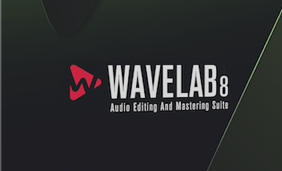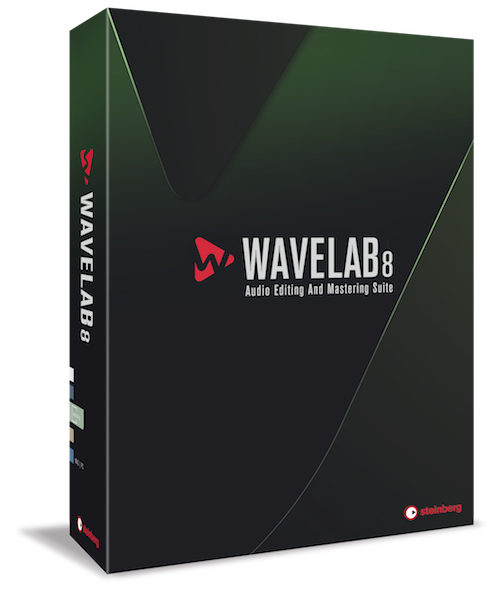Steinberg WaveLab 8 Review
The latest version of Steinberg’s dedicated mastering package has been unveiled. Hollin Jones makes the introductions. Details Price WaveLab 8 £448. WaveLab Elements 8 £82 Contact Steinberg via website www.steinberg.net Minimum system requirements Mac OSX 10.8 Windows 7 Steinberg is perhaps best known for its flagship DAW, Cubase, but it has also for many years been making […]

The latest version of Steinberg’s dedicated mastering package has been unveiled. Hollin Jones makes the introductions.

Details
Price WaveLab 8 £448.
WaveLab Elements 8 £82
Contact Steinberg
via website
www.steinberg.net
Minimum system requirements
Mac OSX 10.8
Windows 7
Steinberg is perhaps best known for its flagship DAW, Cubase, but it has also for many years been making WaveLab, a dedicated wave editing and mastering package. Although it has had a somewhat lower profile than its more MIDI-centric sibling, WaveLab has nonetheless found its way into many studios, and in doing so has become a staple of the production process for a lot of musicians. A couple of years ago it was ported to the Mac platform, having for much of its life been a Windows-only app, and this move has broadened its appeal even further.
Ride the Wave
Before we get into what’s new it’s worth briefly recapping what WaveLab is for. Although capable of multitrack audio recording, it’s not really aimed at music creation in the same way as Cubase is, lacking as it does support for MIDI or virtual instruments. It’s for audio editing, manipulation and processing and is geared towards things like creating podcasts or radio broadcasts and mastering albums. It’s also very good at audio analysis and metering. Although Cubase and other DAWs can do a lot of this kind of stuff, WaveLab does it better, and has many detailed tools that you won’t find in other applications.
After a fairly modest download you activate WaveLab online, and you’ll need a USB dongle to write the license to. The system requirements are pretty reasonable, thanks in part to the fact that you’re only ever going to be running audio effects, not instruments. WaveLab doesn’t look much like Steinberg’s other products and this is a result of its having been developed as a separate, PC-only application. As a result it might feel slightly alien to Mac users, though you can alter the theme to make it more Mac-like.
Regardless of platform, WaveLab has a single-window interface, inside which you can dock and undock tabs and move sections quite freely, so you have a lot of control over your layout. There are window sets that you can configure and zap between, so it’s easy to move, for instance, from montage mode (which you might use to stitch together a radio show) to batch processing mode, where you could be removing the hiss from a bunch of files. It’s quite heavy on small buttons and icons, although there are tooltips to tell you what each one does and you do become familiar with them over time.
What’s New?
WaveLab 8 has inherited some of the latest features from Cubase and Nuendo, which is not surprising given that they’re developed by the same company. First up are a number of additions to the already excellent audio analysis and metering tools in the form of EBU R128-compliant loudness metering with True Peak support and a dedicated loudness graph. If you work professionally and need to submit audio for broadcast in various formats, getting maximum volume while remaining within industry limits is crucial, and these tools enable you to do that. There are also advanced spectrographic and other meters available, enabling you to analyse any aspect of your signal.
Mastering is the process of trying to make audio sound as good as possible on any playback device, and most pro studios have at least two sets of speakers you can use to try to achieve this. WaveLab 8 now supports up to eight separate speaker configurations each with individual gain, so if you have the required hardware you can audition on multiple speakers without having to physically re-wire anything. There’s a much improved and simplified VST Connections window, too, making configuration of audio I/O a breeze.
WaveLab supports any VST plug-ins on your system and also comes with some plug-ins of its own for mastering and audio restoration. New in version 8 is the Voxengo CurveEQ, a clever 64-band spline EQ with the ability to sample and match EQ curves between different sources, as well as a new Tube Compressor for adding warm compression to audio clips. A new brickwall limiter is provided for squeezing maximum gain out of source material while never passing 0dB.
The way in which plug-ins are managed has been improved too, since this was a little clunky. A new plug-in management window lets you search, activate or deactivate plug-ins and create lists and groups based on criteria of your choice. What’s more, loading is nicer, with a new plug-in chain system that essentially tabs effects so you can see them and switch between them much more easily. This is perhaps an overdue addition, but a very welcome one nonetheless.
Elsewhere there are many other improvements, such as a new Master Transport panel that gathers together many of the core playback commands into a single, omnipresent area so you can always get to them easily. Audio editing is as powerful as ever and now includes new features such as Raise Selection, which allows you to adjust the level of individual clip regions easily. You can also process selected regions of an audio file using plug-in chains with a single command, making it quicker to perform tasks such as gain adjustment, hum removal or other things. You can combine multiple clips into one SuperClip, making it easier to deal with large, complex projects, and there’s a new master plug-in area. There’s extensive metadata support and, of course, the pre-existing ability to write Red Book-format CDs, generate PQ codes and upload to SoundCloud. A new iZotope-powered MBIT dithering stage helps with sample rate conversion.
Back to the Lab
WaveLab is a very powerful audio editing environment with much to offer. The user interface is still a little clunky – especially by comparison to Cubase – but it does manage to cram in an awful lot of functionality. It’s not that it’s difficult to use, but the overall feel of the app would be nicer with a bit of a graphical overhaul.
The new features will be welcome for studio owners, especially the multiple speaker setups, easy I/O configuration and professional loudness metering. Managing plug-ins now also works much better, and the ability to create lists and to turn plugs on and off freely is a great help. You can get into huge detail when editing and metering, and features like audio montage and batch processing are really useful, as is the ability to export to multiple formats and even batch-rename groups of files. It’s a workhorse for audio files, going far beyond what a DAW will let you do and providing a great depth of features. The entry-level WaveLab Elements is available for significantly less, though its feature set is naturally slimmer.
Verdict
+ Good audio analysis tools
+ New pro metering tools
+ Multi-speaker outs
+ Exhaustive format support
+ Configurable sections
+ Batch processing tools
– Still looks a little dated
– Quite heavy on icons
Still the best cross-platform wave editor out there. Powerful and with essential pro features.



